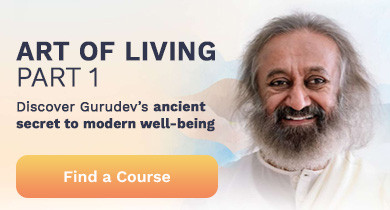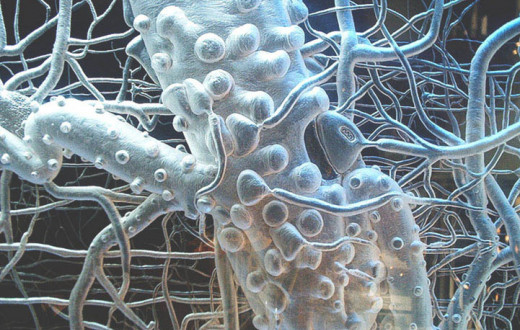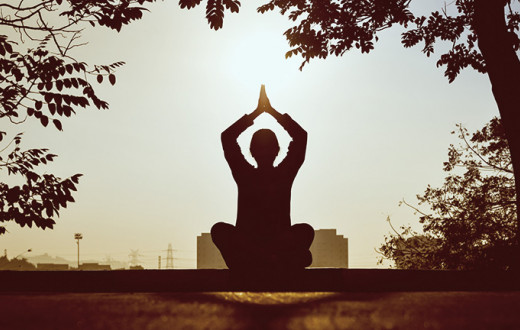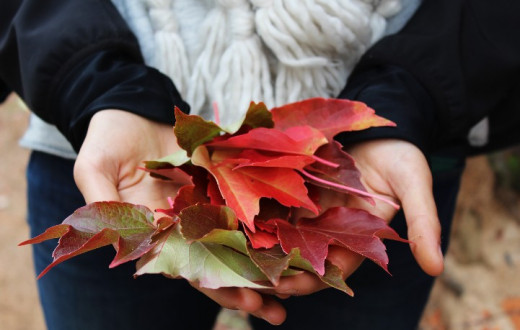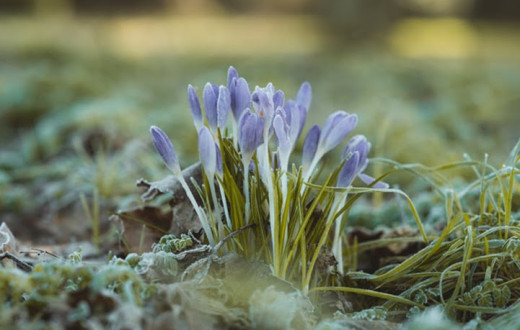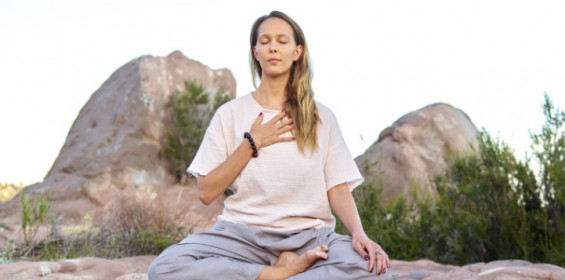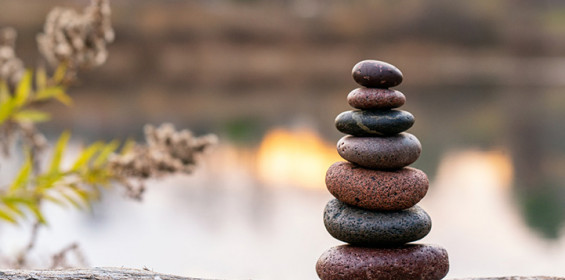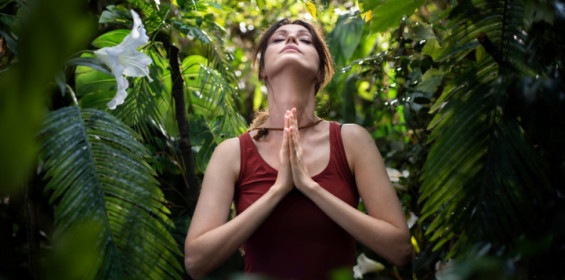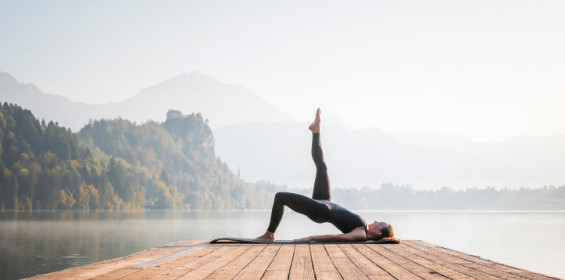
When you think of ecotherapy, do you think of tree hugging? Well, it turns out that there’s a lot more to it than tree hugging. And ecotherapy is gaining the respect of health professionals and researchers worldwide as a nature-based therapy complementary to allopathic medicine. Let's explore all the best ecotherapy practices to help you on your healing journey.
Topics covered:
What is ecotherapy?
Ecotherapy, also known as nature therapy or green therapy, is a practice that connects people with nature to improve mental health. While it primarily benefits mental health, certain types of ecotherapy also benefit physical ailments.
Ecotherapy is based on the idea that people are part of the web of life and that our psyches are not isolated or separate from our environment. In other words, there is a symbiotic relationship between our energy and the energy of the natural environment. The natural energy from the earth, trees, water, and air all have healing properties. However, ecotherapy also includes animal therapy. Many mental health practitioners use ecotherapy modalities to complement traditional therapy approaches.
Benefits of ecotherapy

Exposure to nature has been shown to have positive effects on physical and mental health. These benefits are not limited to visual experiences but also include other senses, such as hearing and smelling. It’s possible to connect with the healing aspects of nature through virtual experiences like relaxing nature sounds of moving water, bird songs, rain falling, ocean waves, and more. Even a wall-sized image of a forest can bring relaxation and calm into an indoor space. Here’s a list of some of the positive benefits of ecotherapy.
Reduced symptoms of depression and anxiety
Reduced anger and negative emotions
Increased positive emotions
Reduced symptoms of ADHD and improved attention span
Enhanced cardiovascular health and reduced risks of high blood pressure
Natural pain reduction
Ecotherapy techniques

Ecotherapy is an umbrella term for nature-based approaches to healing, and interventions can take many forms. Some activities involve a therapist, while others are done individually or in groups.
Ecotherapy sessions can happen in natural settings or even at an office and may involve walking, gardening, or simply spending time in nature. The modalities used in ecotherapy are quite varied and can be tailored to individual needs and goals.
Here are some of the more popular ecotherapy techniques you might want to try for yourself.
Walking meditation
Walking meditation often involves a meditation labyrinth, but it can also be used as a simple mindfulness meditation technique anywhere, in nature, or even where nature is lacking.
Tree hugging
Tree-hugging gained popularity in the 1970s and 1980s, but believe it or not, the practice dates back to at least 1730, when a group of Hindus hugged the trees in their village to protest their removal. No complicated instructions are needed; just hug a tree and linger.
Forest bathing
Forest bathing or forest therapy is another technique that has existed for as long as forests, but the term is new. Forest bathing is believed to be beneficial because of the higher concentrations of clean air and subtle lifeforce energy called prana or qi. It’s no wonder that we naturally take a deeper breath when we first come to a forest.
Grounding or earthing
For a few decades now, grounding—having your skin touch the earth—has attracted researchers who are trying to understand the connection between the earth’s electrical energy and the health benefits many claim to experience. Clinton Ober is credited with driving the initial research, inventing ways to ground from inside your home, and starting the grassroots movement of earthing. For more information on grounding, watch The Earthing Movie, a documentary on YouTube.
Gardening and social farming
Just like grounding, gardening activities have ecotherapy benefits, partly due to contact with soil. Social farming or community gardens can increase these benefits due to the human connection factor. It is also beneficial to create and spend time in Zen gardens.
Outdoor meditation
Meditation is known for its healing benefits, both mental and physical. However, when you meditate outside in closer proximity to nature, you gain even more benefits. Whether meditating solo or in a large group, outdoor meditation is a wonderful way to reap the benefits of ecotherapy.
River gazing
There’s something very special about sitting on a river bank and watching the water flow, much like our thoughts flow—never-ending. However, the flow of water can actually reduce thoughts and increase calm.
Animal-assisted therapy
Therapy dogs provide comfort and healing support wherever they go, and they go almost anywhere people are experiencing stress and health challenges. Hospitals, schools, nursing homes, and hospice care typically host therapy dogs. You just have to ask.
Animal-assisted therapy is beneficial for trauma relief and recovery from chronic illness or surgery. Children are especially receptive to animal-assisted therapy.
Equine therapy is also popular but usually requires a certified therapist to guide the process.
Yoga in the park
Forget about hot yoga in a stuffy studio, join a group, or go by yourself to a park and immerse yourself in the experience of yoga in a natural setting. This green exercise has the healing power to reduce depression and so much more. If you’re not into yoga, try bicycling as a green exercise.
Nature arts and crafts
Creating art from nature’s gifts of pine cones and sparkly stones is yet another way to engage in ecotherapy. Mindfully collect natural items for an art project on your next nature walk.
Hiking and camping
Getting away and spending time with nature on a hike, camping, or both can feed your soul like nothing else. These types of activities, also known as wilderness therapy, can be done alone or in a small or large group. And if you build a campfire, you can do fire gazing for even more relaxation.
Ecotherapy and Ayurveda
While distinct, Ecotherapy (nature therapy) and Ayurveda share a common thread: recognizing the profound connection between humans and nature for holistic well-being. Ayurvedic medicine is an ancient Indian system that emphasizes natural herbal remedies and aligning with nature's rhythms, while ecotherapy utilizes the natural environment for therapeutic benefits. To learn more about Ayurveda, visit our dedicated blog pages here.
FAQ’s

Is ecotherapy legit?
Ecotherapy isn't a cure-all for physical health issues. Depending on the study, only 15% to 40% of participants report significant physical health improvements from nature-based interventions. Of those who do benefit, about 50% to 70% maintain improvements over time, varying by the type and duration of ecotherapy. With that said, there are no bad side effects unless you forget to wear sunscreen. Nature-based therapies tend to benefit the mind and emotions more than physical health issues.
Does insurance cover ecotherapy?
Some insurance companies cover ecotherapy, but you must check with your provider. They will likely want a certified ecotherapist who must also be in network.
What are the key principles of ecotherapy?
Nature immersion
Mindfulness in natural settings
Sustainable interaction with the environment
Fostering a sense of belonging in nature
Working with ecotherapists
Ecopsychology and ecotherapy are emerging fields, and many practicing ecotherapists are trained and licensed in related areas such as counseling or psychotherapy. If you decide to work with an ecotherapist, make sure they have the certification and licensing required to practice in your state. And if you’re interested in becoming an ecotherapist, make sure you get the necessary credentials.
Many ecotherapy training programs offer training in a wide range of techniques that can be applied to individuals, couples, groups, and communities. Various institutions offer courses and training programs in ecopsychology and ecotherapy, which last from a few months to a year.
DIY ecotherapy
Not everyone has access to a certified ecotherapist. However, one of the beautiful things about ecotherapy is that there are many ways to do it yourself.
Simply go for a walk outside. Nature is everywhere!
Create a routine that incorporates one or more ecotherapy practices as part of your daily life.
Grow something. If you don’t have space for a garden, plant herbs and other plants in containers on a deck, porch, or in your home using a sunny window or grow light.
Practice meditation techniques like mantra-based meditation and breath-based meditation outside.
Take your yoga mat outside and practice Sun Salutations first thing in the morning.
In a nutshell
The evidence indicates that engaging with nature can positively affect physical and mental health throughout life. Adults who engage with nature generally experience lower blood pressure, cholesterol levels, and body mass index and are less likely to develop chronic diseases. Children who connect with the natural world tend to be more active and socially engaged and enjoy better health outcomes. Ecotherapy is a valuable tool for enhancing physical and mental health and can be utilized alongside traditional therapy methods.
Need a meditation technique for outdoor meditation?

One of my favorite outdoor meditation techniques is SKY Breath Meditation (Sudarshan Kriya). Not only does it help me access subtle life force energy, but it is the one thing I do for myself every single day. Though I cannot practice outside every day due to living in a colder climate, I still experience all the great benefits when meditating indoors. I have come to depend on positive feelings being my norm. I am in a better mood when I practice SKY, and it’s very easy for me to unwind when needed.
Some of the other benefits commonly experienced are:
Greater mental focus
Improved self-esteem
Increased positive emotions
Healthier blood pressure
Increased life satisfaction
Significant reduction in depression and anxiety
Enhanced deep sleep
Improved immunity
Increased joy
SKY is the best healing practice I have ever come across. You can learn SKY on the Art of Living Part 1 course and experience it for yourself. Click here for more information.
Related articles
Celebrate Earth Day with Meditation as a Way to Help the Environment
Feed the Birds: How to Be Close to Nature for Silence and Celebration
Prescribing Nature Time: 6 Benefits of Your Body’s Outdoor Adventures
Carbon Offset: How Elton John and You Can Erase Footprints for Climate
Water for Life: Are You Drinking Your Water the Healthy Way?
Green Pocket Forests: Growing a 100-Year-Old Forest in 10 Years
Fighting the Clean Water Crisis, One River at a Time
Weekly Wisdom: Appreciating Trees During the Climate Crisis
How to Save the Planet While It’s Still Not Too Late: Start at Home
Sound Baths and Mental Bubble Baths: Get Your Mind and Body Ahh’s Here
Weekly Wisdom: Saving the Planet’s Wildlife Before It’s Too Late
According to the UN, Fight Climate Change by Eating a Plant-Based Diet
Transform Climate Grief into Action: 12 Tips on How You Can Save the Earth

